

Challenge:
Although we are increasingly concerned about sustainability and the environment, tires are still found scattered along roadsides and in forests. But do we really consider their future in landfills, forest edges, or collection sites?


The invention and development of tires significantly influenced the freedom to travel, but with the rapid growth of vehicles, waste management was often neglected. Every year, 1.5 billion tires become waste worldwide, and by 2040 it is projected that there will be 2 billion cars and nearly 800 million trucks, highlighting environmental challenges related to exploitation and waste management.
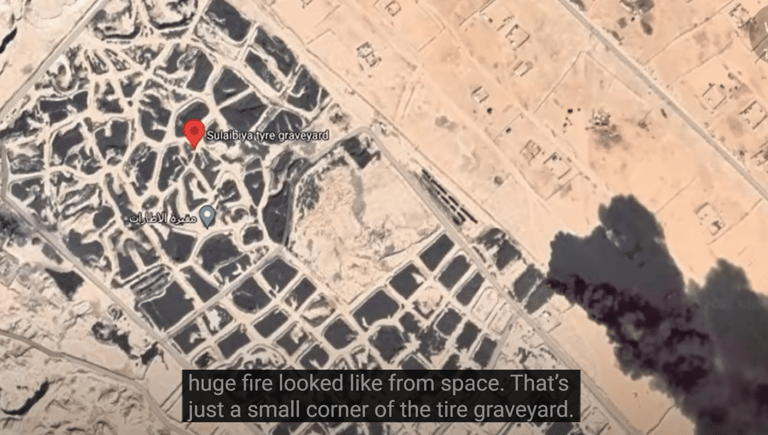

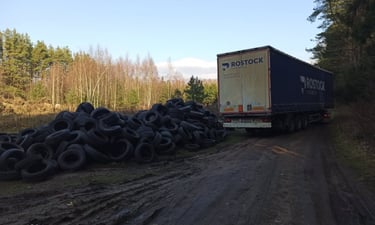

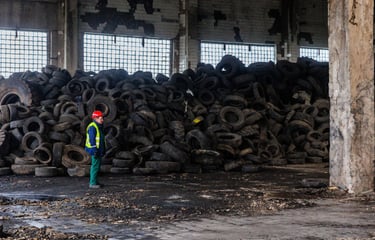

Future
The invention and development of tires significantly influenced the freedom to travel, but with the rapid growth of vehicles, waste management was often neglected. Every year, 1.5 billion tires become waste worldwide, and by 2040 it is projected that there will be 2 billion cars and nearly 800 million trucks, highlighting environmental challenges related to exploitation and waste management.
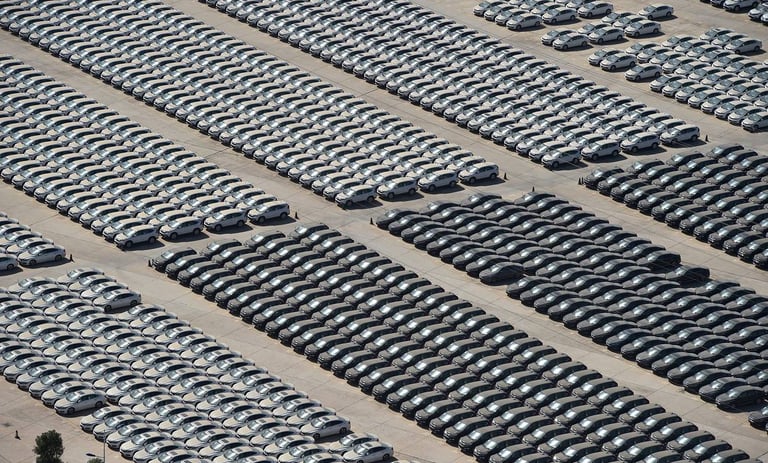

Context
The ELT (End-of-Life Tire) study conducted during the research opened new opportunities to view tire waste not as a problem, but as an untapped resource. Applied technologies, scientific research, experimental studies, and innovative application methods made it possible to analyze the properties of different granule fractions and reveal their multifunctional potential in creating spatial, three-dimensional objects suited for small-scale architecture.
The "Re ti" collection consists of three objects: children’s playground equipment, road barriers, and benches for public spaces. These objects not only address an ecological problem but also create a new perspective – transforming waste into resources. The objects protect against terrorist attacks during events, contribute to spreading sustainability, encourage children’s creativity and curiosity, foster dialogue between city residents and visitors about sustainability, and shape a conscious attitude toward the future environment.The "Re ti" collection consists of three objects: children’s playground equipment, road barriers, and benches for public spaces. These objects not only address an ecological problem but also create a new perspective – transforming waste into resources. The objects protect against terrorist attacks during events, contribute to spreading sustainability, encourage children’s creativity and curiosity, foster dialogue between city residents and visitors about sustainability, and shape a conscious attitude toward the future environment.
Outcome: ELT transformation: Sustainable solutions for urban infrastructure
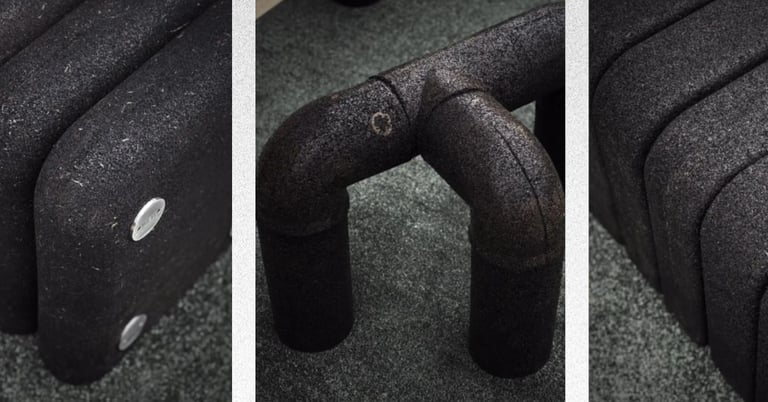

Benches for public spaces
By using recycled TDM material in the production of benches and the creation of small architectural elements, the bench initiates a dialogue between city residents and visitors about sustainability, resource conservation, waste recycling, adaptability, responsible urban planning, and functionality.
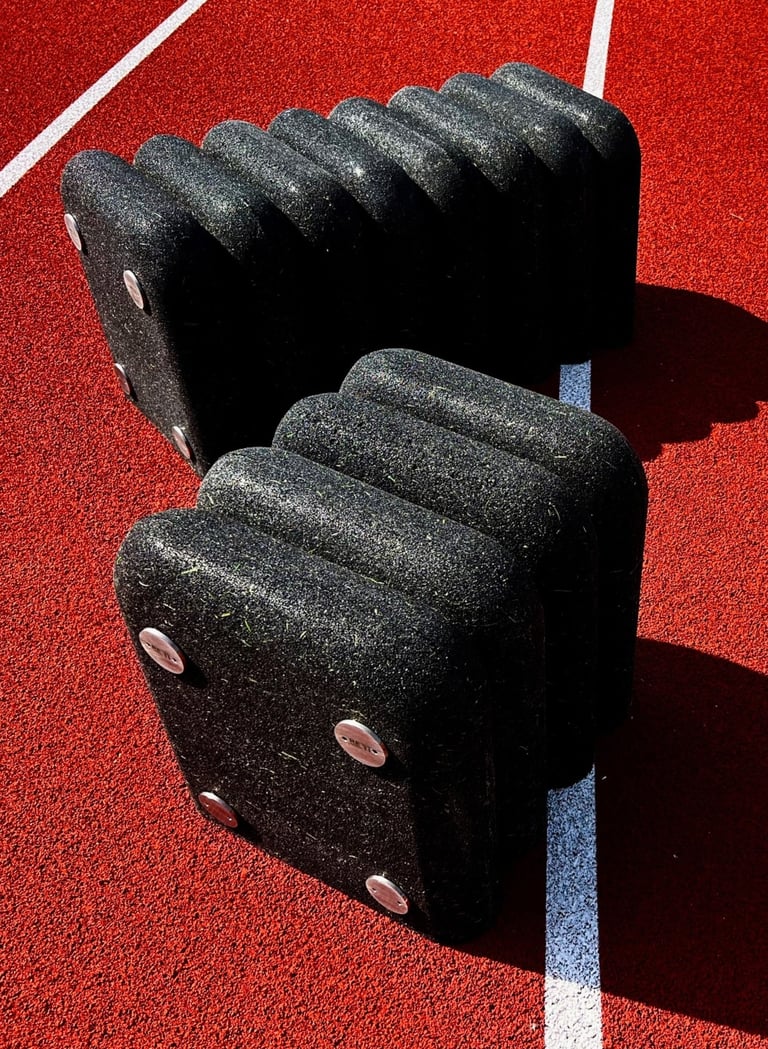

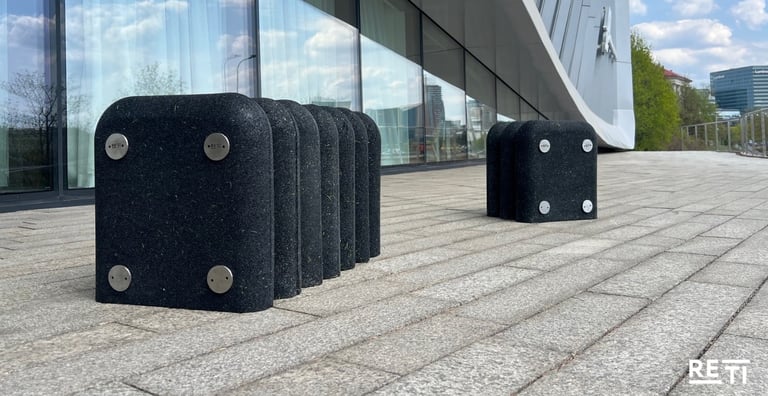



Road barriers
Terrorist attacks using vehicles as weapons are still common due to their simplicity and spontaneity. From 1970 to 2019, there were 257 vehicle-based terrorist attacks, with more than 70% of the attacks occurring in the last six years.
When examining the barriers used, it was noted that segmental fences do not ensure people's safety, and the harsh design used can evoke associations and negatively affect event participants.
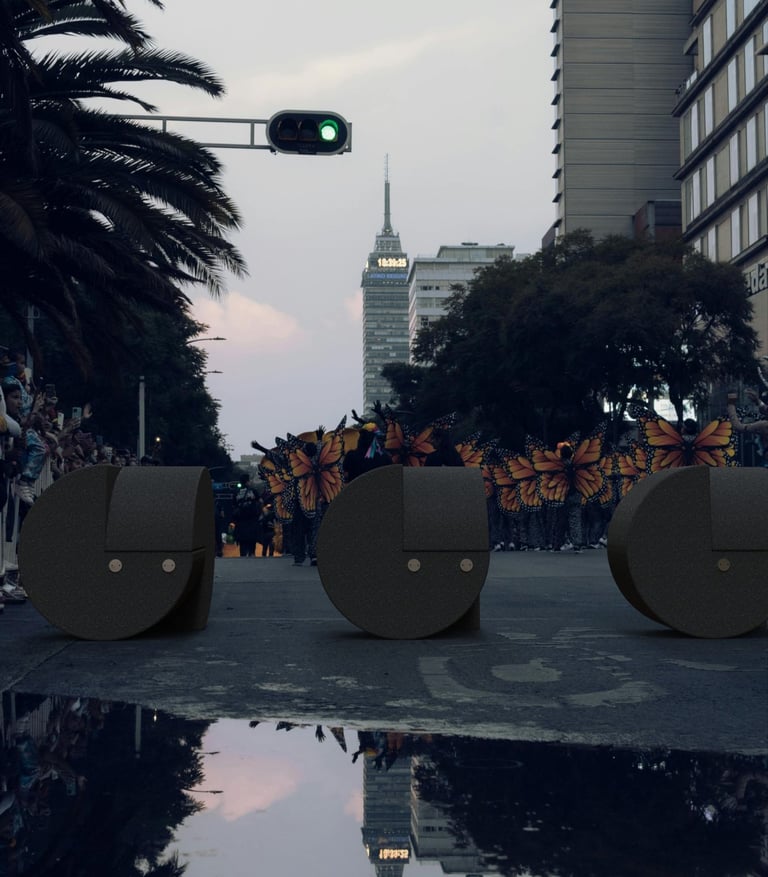

The road barriers were designed using sculptural forms that would replicate the tubular structure and maintain a common visual pattern with other objects being created. The road barriers use constructive solutions that ensure not only aesthetics, but also the functionality of the object.
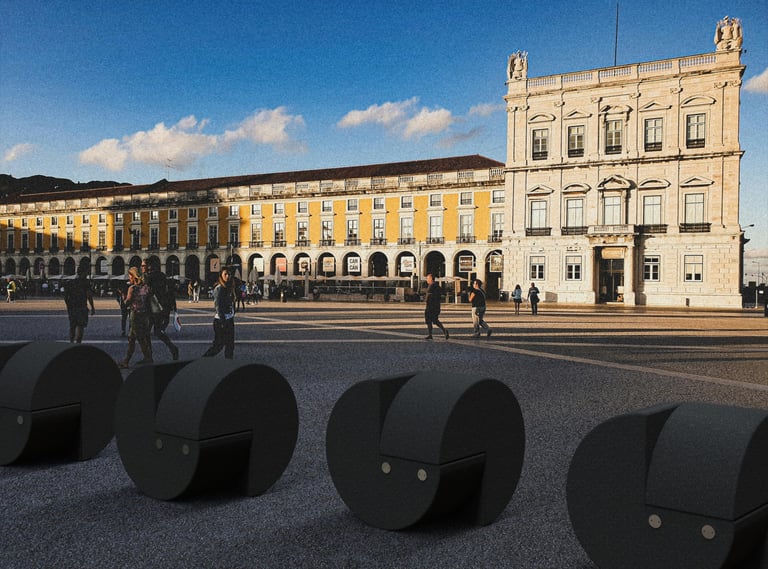

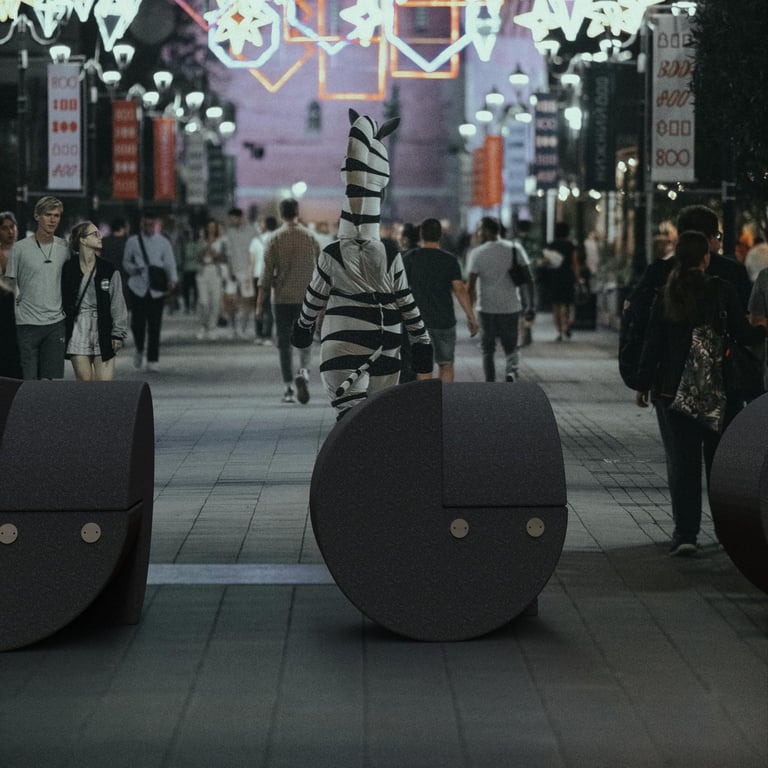

Children's playground
equipment
While researching the shapes and effects of children's playgrounds, I used oval abstract shapes for the creative process, which would encourage children to move and explore. Also, sustainable materials and eco-friendly design: teaches children about sustainability, caring for the environment, and conserving resources.
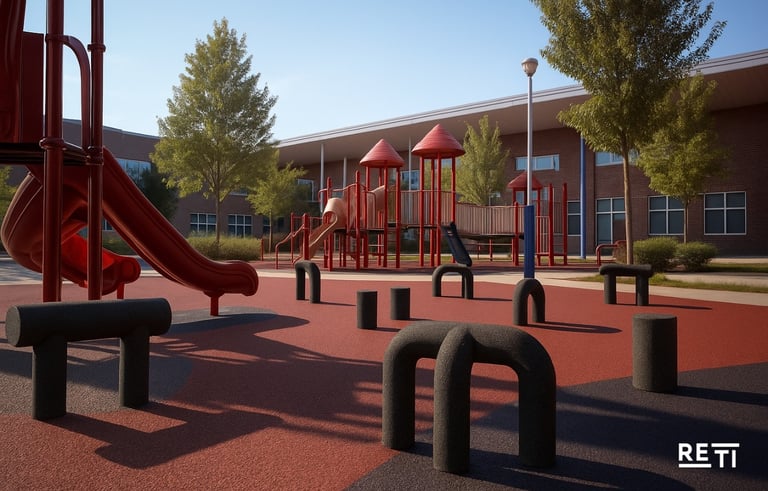

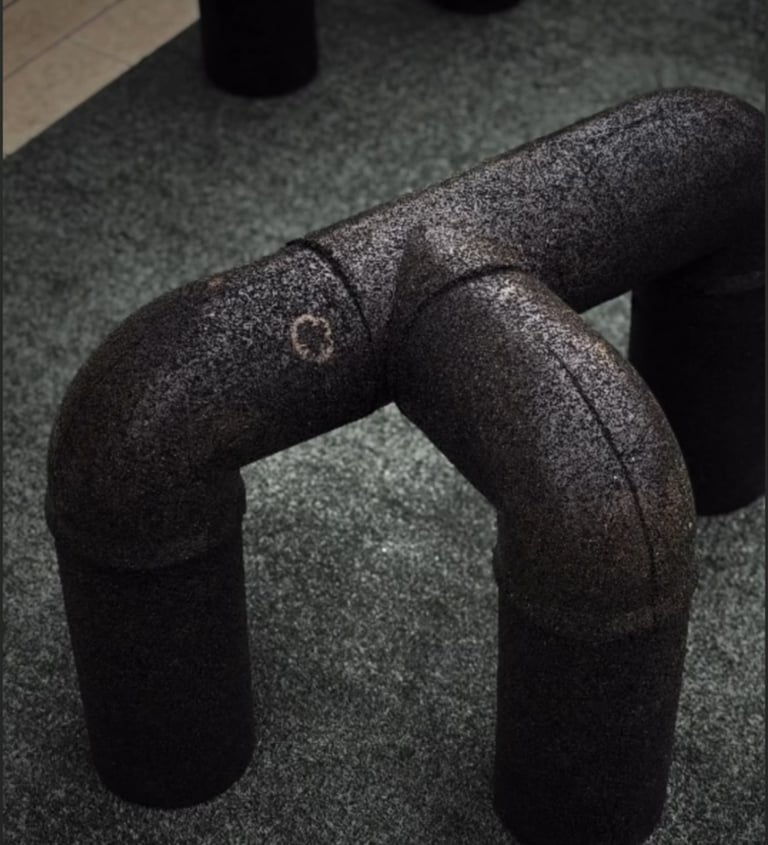

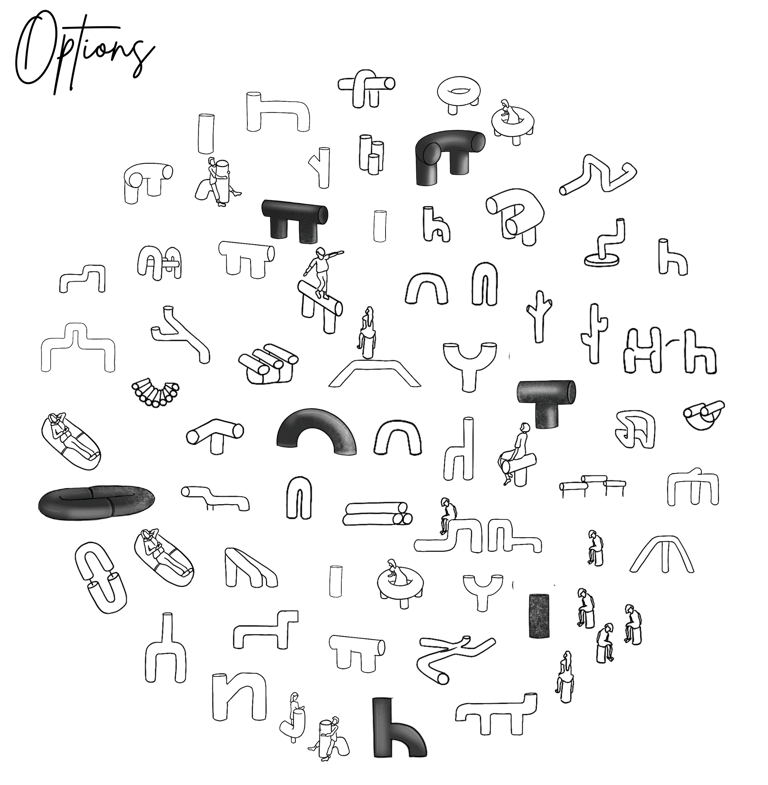

Children's playground equipment objects may resemble certain elements of nature: animals or plants, but the devices retain an abstract nature that allows children to discover and imagine their meaning for themselves.
